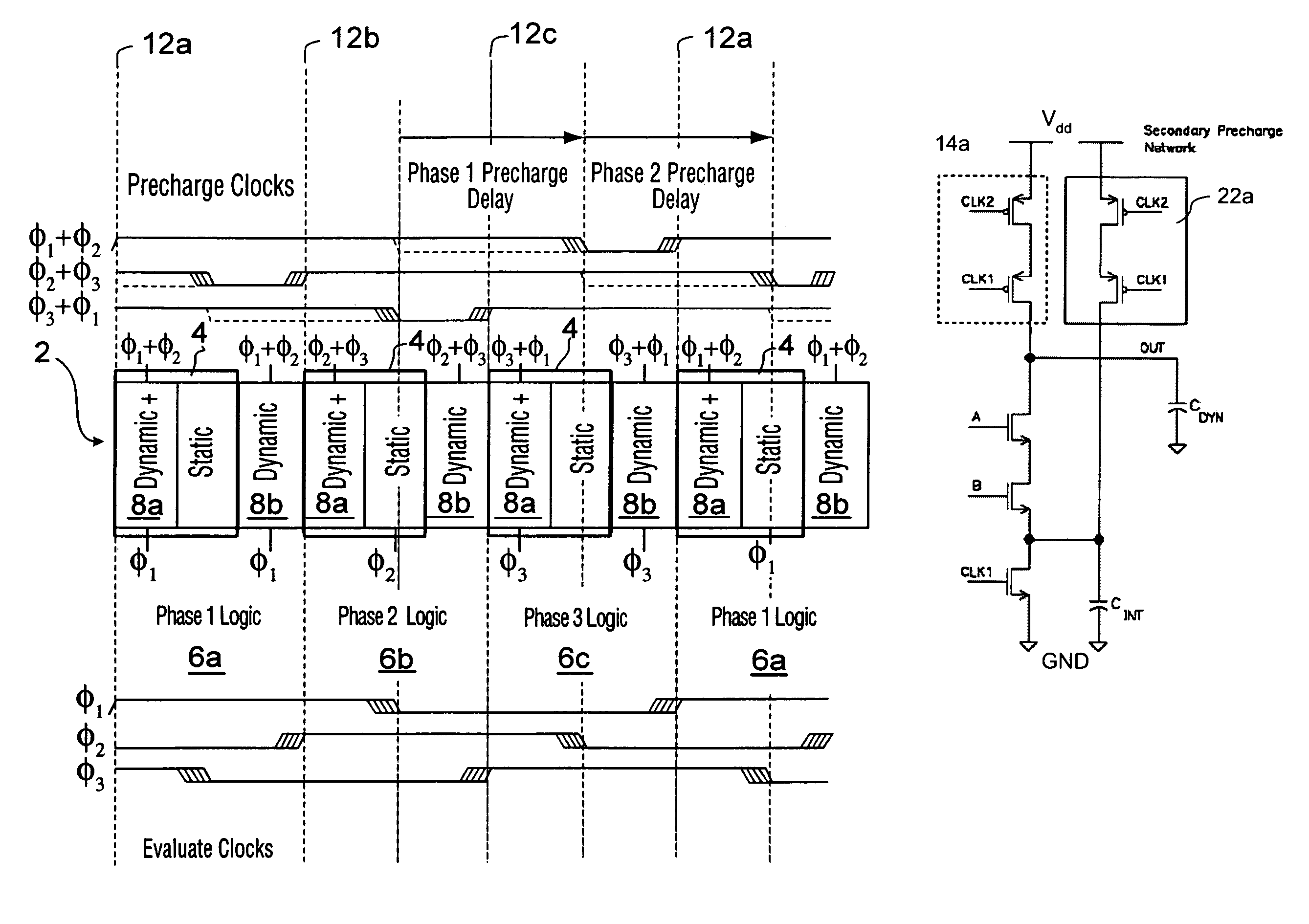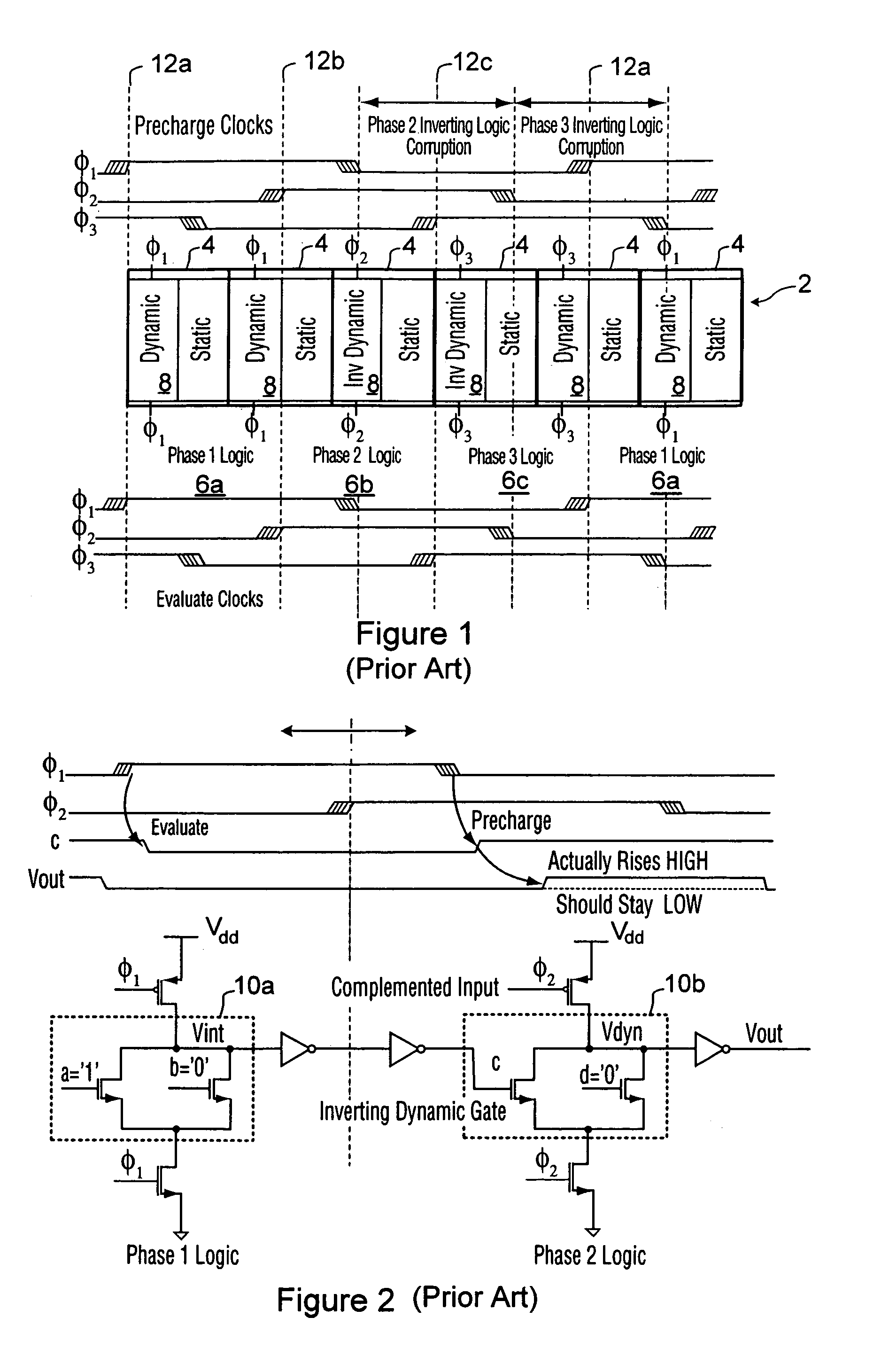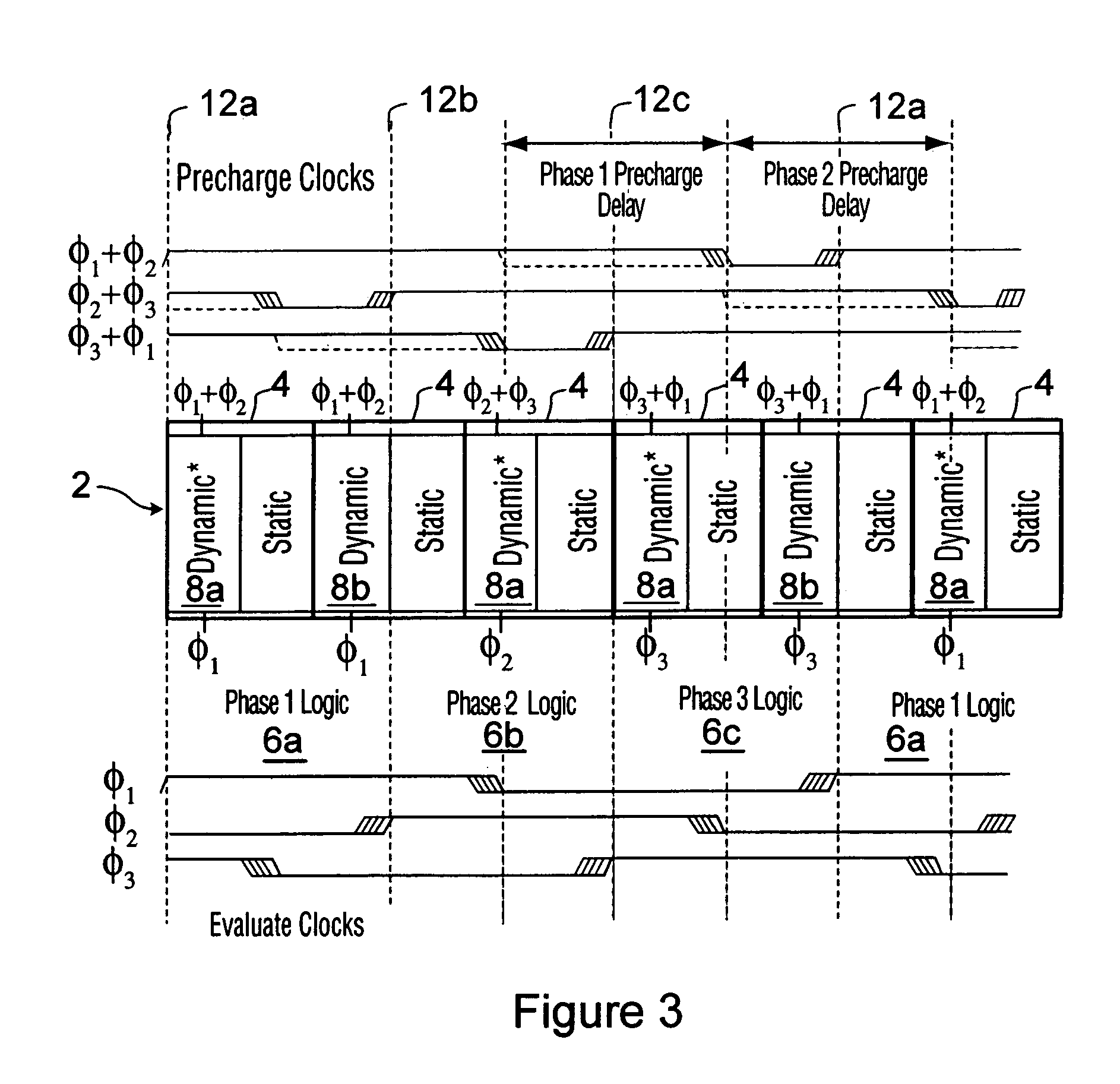Clock logic domino circuits for high-speed and energy efficient microprocessor pipelines
a microprocessor pipeline and logic domino technology, applied in logic circuits, pulse techniques, electric devices, etc., can solve the problems of increasing the power consumption of integrated circuits, including microprocessors, at an exponential rate, reducing the power efficiency of micro-architectures, and reducing the efficiency of micro-architectures. , to achieve the effect of reducing the cost of micro-architectures, increasing the clock frequency faster, and more complex circuit techniques
- Summary
- Abstract
- Description
- Claims
- Application Information
AI Technical Summary
Benefits of technology
Problems solved by technology
Method used
Image
Examples
third embodiment
[0074]CL-domino combines OR-precharge with AND-evaluate to eliminate spurious transitions on the inputs of input-complemented or non-monotonic functions, when a domino gate 4 is holding the evaluated data and doing no useful work. Spurious input transitions can cause charge-sharing which may result in a change of the evaluated logic state. Unwanted input transitions can occur for domino-precharge / AND-evaluate when the previous cell 6 is precharging and the current cell 6 has finished evaluating thus leaving the output floating high. An example implementation of “OR-precharge / AND-evaluate” is shown in FIG. 5.
[0075]Since this style of CL-domino combines OR-precharge with AND-evaluate, the equations noted above for the skew-tolerance of OR-precharge and AND-evaluate are applicable. Therefore, the constraints on skew tolerance for OR-precharge / Domino-evaluate apply.
[0076]Furthermore, as for AND-evaluate, time borrowing cannot occur across phases for CL-domino gates clocked strictly by O...
fourth embodiment
[0077]CL-domino takes advantage of the fact that the precharge operation for a cell 6 of domino logic occurs for all dynamic gates 8 in parallel while evaluation happens in series. Because series evaluation is usually the critical path, it is reasonable to allocate a larger portion of the cycle for evaluation. This means that the duty cycle of the evaluate clocks should be increased. However, it is known that evaluate clocks with large duty cycles will often fail due to min-delay failures. Conversely, long duty cycle clocks will not be able to tolerate much skew or afford much time-borrowing. A technique for using extra non-overlapping clocks to the first domino gate of each cell is shown for CL-domino in FIG. 6.
[0078]The extra clocks, denoted by Φ1→Φ3, may be the same clocks used in conventional skew-tolerant domino, and the extended evaluate clocks are the logical OR of two consecutive clock phases. This fourth embodiment is referred to as Clock-Logic domino “OR-Precharge / OR-Evalu...
fifth embodiment
[0086]Dynamic gates 8 that are directly coupled to each other with no intervening static logic predate the popularity of CMOS circuits. CL-domino which uses OR-precharge for all single-rail domino pipelines, is called “Dynamic Cascaded OR-Precharge / Domino-Evaluate” and is shown in FIG. 7.
[0087]Dynamic gates 8 can be placed back-to-back at cell boundaries 12 without an intervening static gate, provided that the logic of a current cell finishes before a next phase begins. Since it has been established above that time cannot be borrowed from a cell that implements an input complemented or non-monotonic function in any case, cascading dynamic gates 8 directly will result in better performance in some situations since the pipeline will contain more dynamic gates 8 in the critical path.
[0088]In the embodiment shown in FIG. 7, the “Dynamic+” gates 8a implement any of an input complemented function, a non-monotonic function, or a standard dynamic logic function. “Dynamic” gate 8b on the oth...
PUM
 Login to View More
Login to View More Abstract
Description
Claims
Application Information
 Login to View More
Login to View More - R&D
- Intellectual Property
- Life Sciences
- Materials
- Tech Scout
- Unparalleled Data Quality
- Higher Quality Content
- 60% Fewer Hallucinations
Browse by: Latest US Patents, China's latest patents, Technical Efficacy Thesaurus, Application Domain, Technology Topic, Popular Technical Reports.
© 2025 PatSnap. All rights reserved.Legal|Privacy policy|Modern Slavery Act Transparency Statement|Sitemap|About US| Contact US: help@patsnap.com



